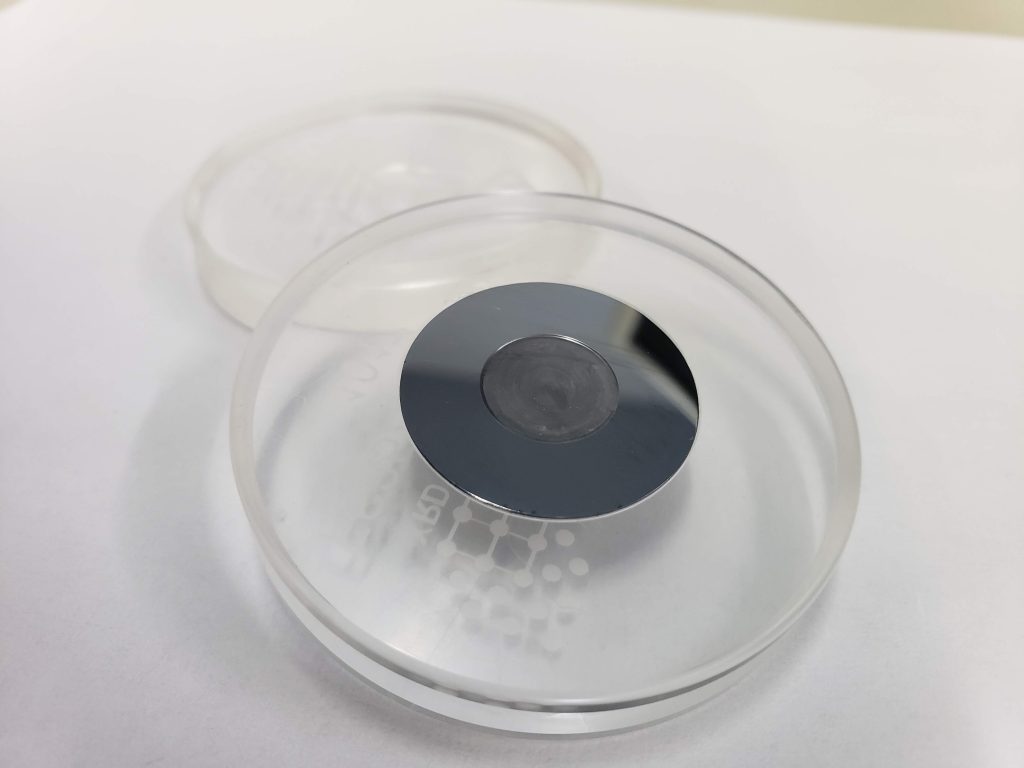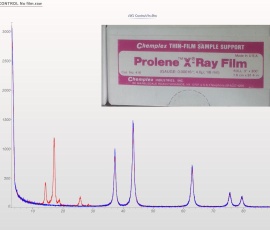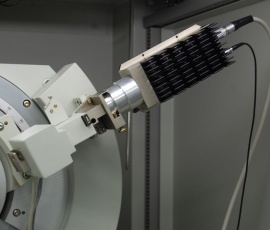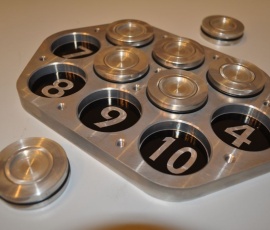We often receive requests for small powder wells to be ground into our zero-background sample holder plates. I usually try to talk the requestor out of this as it has limited usefulness for most applications, but there are some reasons one might benefit from this type of holder. It’s for these special cases that we’ve always offered custom ground wells in our ZBH plates and we continually improve our process to give our clients exactly what they want and need to get their work done.
There are three reasons I try to avoid this.
- It adds cost. The very small grinding tools required for this cut very slowly. This is partially to avoid building up heat in the plate which will shatter if it goes too far. In the foolishness of my youth I once tried to score large wafers with a CO2 laser. After two passes it would explode leaving about 50% waste material, but it got the job done. Heat is your enemy when it comes to very hard materials like this. We also don’t use pre-ground plates. Each one is machined from a flat plate after it’s been mounted in the sample holder to ensure perfect alignment with the plane of diffraction while also giving us the freedom to cut any shape/depth we could want. I.e. if one wanted a square or oval shaped pocket, we could machine that. All this flexibility adds up to additional work/time which adds to the cost of each holder.
- It’s often unnecessary. If you have enough material to fill most wells, it probably won’t be transparent to x-rays anyway. I find that many users of sample holders with wells could get by without them by simply using a smaller well in a standard sample holder. The additional scatter from PMMA plastic may or may not be a problem, but if the user can live with it, it’s a huge cost saver.
- As soon as we break the surface, we’re no longer dealing with a monocrystalline material. I’ve never seen any practical evidence that this causes a problem, but it’s always concerned me that grinding these plates essentially creates a polycrystalline material at the surface of the well. I would love to hear from anyone who’s ever seen a weak Si pattern superimposed on their data.
One alternative I often recommend is recessing the entire plate by some number of microns to accommodate different particle sizes if that’s a concern. I believe that many XRD users are asking for sample wells in their ZBH simply to avoid the displacement error inherent in mounting their powder on top of a plate which has already been fixed at the plane of diffraction. Recessing the plate allows us to retain the polished surface of the ZBH and allows us to mount it with at least the same degree of precision that a well would provide. Precision mounting adds about as the same cost as grinding, but it definitely has benefits. To my knowledge, KSA is the only company offering this type of mounting.
So that was an awful lot of reasons to avoid this, but there is one very big benefit of using a ZBH with a ground well. This allows you to run very small volumes of sample material while maintaining a very consistent irradiated area. Imagine the same volume of powder spread across a flat plate. Each time this is done, a slightly (if not significantly) different surface area of the plate is likely to be presented. The end result of this will be variations in intensity and perhaps preferred-orientation. Particle statistics change with varying numbers of crystallites in the plane of diffraction as well. This is all complicated by the changes in the irradiated area throughout a normal scan with divergent-beam optics.
The well pictured here is 12mm in diameter and 0.2mm in depth and a good example of the kind of custom work that is most common for us.






Sorry, the comment form is closed at this time.